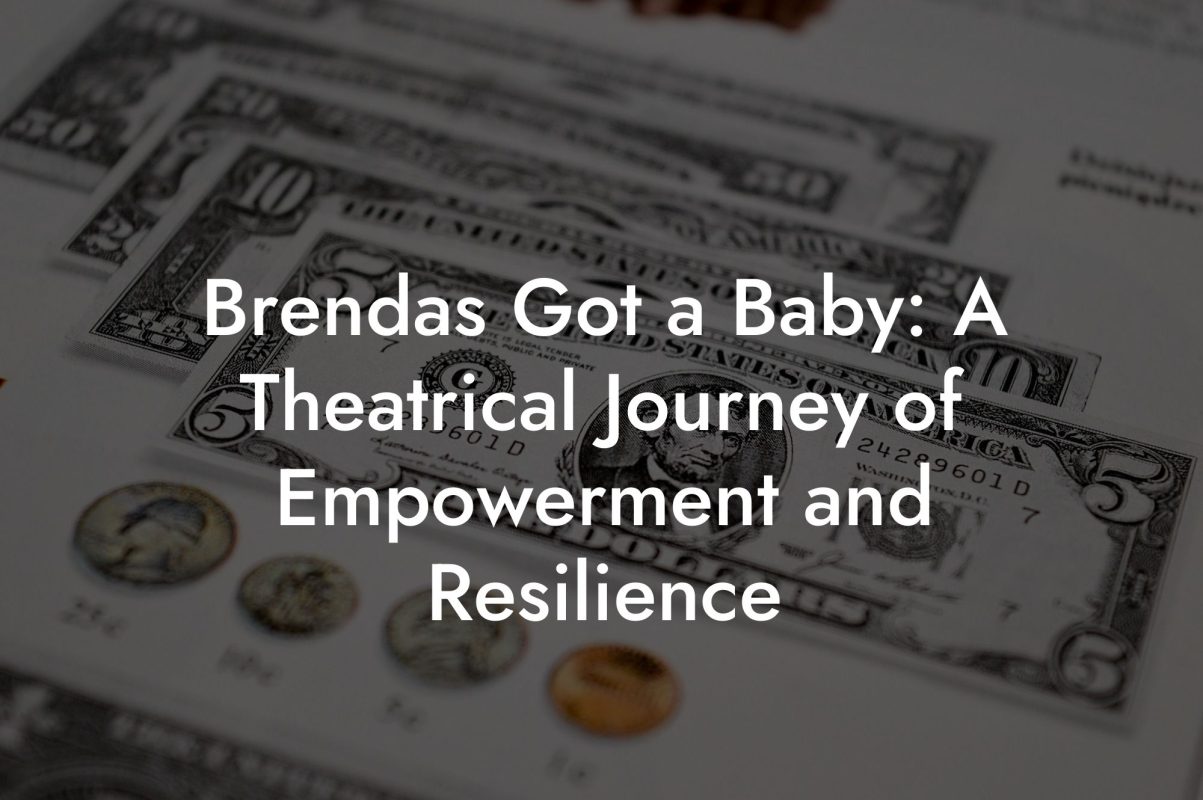Picture this: you're sitting at your favorite local coffee shop, latte in hand, scrolling through your investment apps while wondering if there’s a secret financial hack that’ll catapult your retirement savings into the stratosphere. Now, imagine that instead of a magic wand, you have two powerful contenders—Keogh and SEP plans—to help you navigate the often bewildering world of self-employed retirement planning. Buckle up, because we’re about to dive into the epic showdown of "KEOGH Vs SEP"—a head-to-head comparison designed with humor, clarity, and a dash of irreverence to help you, the savvy millennial or Gen Z trailblazer, make smarter financial decisions.
KEOGH Vs SEP Table of Contents
The Self-Employed Retirement Conundrum: Keogh Vs SEP Unveiled
Decoding Keogh Plans: The Veterans of Self-Employed Retirement Options
SEP IRAs: The Low-Maintenance Option That Packs a Punch
Comparing the Titans: Keogh Vs SEP – What’s the Real Difference?
Tax Implications: Maximizing Deductions and Deferring Taxes
Contribution Limits: How Much Can You Really Save?
Choosing the Right Plan for Your Unique Situation
Real-Life Scenarios: Keogh or SEP in Action
Impact on Your Financial Wellbeing: Long-Term Considerations
Maximizing Your Contributions: Strategic Tips for Self-Employed Savvy
Resources and Community Support: Your Next Steps
Your Journey to Financial Empowerment: Crafting a Secure Future
Integrative Financial Strategies: Case Studies and Success Stories
Building a Future: Next Steps and Actionable Tips
The Self-Employed Retirement Conundrum: Keogh Vs SEP Unveiled
For many of us hustling in the gig economy or launching our own startups, the traditional employer-sponsored 401(k) doesn’t quite cut it. Instead, we find ourselves at a crossroads between two popular retirement vehicles: Keogh plans and SEP IRAs. Each comes with its own set of rules, benefits, and—let’s be real—complications that can leave even the most financially literate scratching their heads. But fear not! In this comprehensive guide, we’ll break down these retirement options, compare their features, and help you decide which plan deserves a prime spot in your portfolio.
Whether you’re a freelancer, a small business owner, or a side hustle superstar, understanding the differences between Keogh and SEP is crucial to supercharging your retirement savings. Ready to unravel the mysteries? Let’s get into it.
Decoding Keogh Plans: The Veterans of Self-Employed Retirement Options
Keogh plans, named after former Congressman Eugene Keogh, have been a staple of retirement planning for self-employed professionals for decades. They come in two flavors: defined contribution and defined benefit plans. While defined benefit plans promise a predetermined payout at retirement (think pension-style income), defined contribution plans allow you to dictate your own contributions, much like a 401(k) but without the fancy employer matching bonus.
One of the key advantages of a Keogh plan is its capacity for substantial contributions. This can be especially appealing if you’re flush with cash from a booming freelance career or a rapidly growing business. However, the administrative burden can be a bit more intense, with more paperwork, stricter IRS regulations, and a level of complexity that might make you yearn for the simplicity of your favorite budgeting app.
In a nutshell, Keogh plans provide an opportunity for high contributions and potential tax advantages, but they require a consistent level of income and discipline. They are ideal for those who enjoy financial intricacies and are ready to roll up their sleeves each tax season.
SEP IRAs: The Low-Maintenance Option That Packs a Punch
On the flip side, the Simplified Employee Pension, or SEP IRA, is designed for those who want a straightforward, no-fuss approach to retirement savings. As the name suggests, SEP IRAs are simplified, meaning you can get set up with minimal paperwork and administrative overhead. They are a favorite among small business owners and independent contractors who crave efficiency and flexibility.
One of the biggest draws of SEP IRAs is that contributions are tax-deductible, and the plan operates much like a traditional IRA on steroids. You don’t have to worry about the complex contribution calculations of some other plans—just contribute a percentage of your income, and you’re good to go. That percentage can be adjusted each year, which is particularly handy for those with fluctuating incomes.
With a SEP IRA, you get the convenience of fewer administrative requirements and the versatility to handle inconsistent cash flows. It’s perfect for the modern entrepreneur who values simplicity without sacrificing serious retirement savings potential.
Comparing the Titans: Keogh Vs SEP – What’s the Real Difference?
To truly understand which plan might work best for your unique situation, we need to get into the nitty-gritty details. Here’s a breakdown of the key differences between Keogh and SEP plans:
- Contribution Limits: Keogh plans often allow larger contributions than SEP IRAs, especially if you opt for a defined benefit model. This can be highly beneficial if you’re chock-full of profits. SEP IRAs, on the other hand, generally allow contributions up to 25% of compensation or a set dollar limit—whichever is lower.
- Administrative Complexity: Keogh plans come with more red tape and administrative requirements. If you’re not a fan of elaborate spreadsheets and tax forms, this might be a sticking point. SEP IRAs are much simpler to set up and maintain, which can save you precious time and sanity.
- Flexibility: SEP IRAs are inherently flexible. You can adjust your contributions each year based on how your business is doing. Keogh plans are less forgiving in this regard, particularly the defined benefit type.
- Eligibility and Income Requirements: While both plans cater to self-employed individuals and small business owners, Keogh plans might require a more consistent income stream to fully reap their benefits. SEP IRAs are more adaptable for those with variable incomes.
- Tax Benefits: Both plans offer attractive tax deductions, but the larger contribution limits of Keogh plans can translate into a substantial tax benefit for high-income earners. SEP IRAs also offer a good tax break, especially for those looking to simplify their tax reporting.
Ultimately, the right choice for you will depend on your business income, your appetite for administrative complexity, and your long-term retirement goals. It’s like choosing between a luxury sports car and a reliable hybrid—both will get you where you need to go, but one might suit your lifestyle and personality a bit better.
Tax Implications: Maximizing Deductions and Deferring Taxes
One of the most compelling reasons to choose either a Keogh or SEP plan is the opportunity for tax savings. Both plans allow you to make deductible contributions, which means lower taxable income and more money in your pocket during tax season. Let’s break down how each stacks up in terms of tax advantages:
Keogh Plans and Tax Benefits
With Keogh plans, especially the defined benefit type, you’re often allowed to contribute significantly more to your retirement fund. This can lead to a massive reduction in taxable income, which is great news if you’re riding high on a successful business.
However, these larger contribution limits come with certain requirements, such as the need for a consistent income level—a challenge for entrepreneurs with fluctuating earnings. Additionally, the plan's complexity might lead to higher administrative costs or the need for professional guidance, which can generate their own tax deductions.
SEP IRAs and Their Simplicity in Tax Savings
SEP IRAs offer tax-deductible contributions in a much more straightforward manner. Contributions made as a percentage of your income result in an immediate reduction in taxable income. There’s no need to calculate complex formulas or worry about maintaining elaborate records—a real win for those who prefer a streamlined approach.
Keep in mind, though, that while the tax benefits are significant, the contribution limits might be lower than those allowed under some Keogh plan structures. This trade-off between simplicity and higher potential contributions is one of the core considerations when deciding which plan to choose.
In both cases, the key is to consult with a tax professional to understand how these plans fit into your broader financial strategy and to ensure you’re taking full advantage of all the tax benefits available.
Contribution Limits: How Much Can You Really Save?
The contribution limits for Keogh and SEP plans are an essential factor in determining which option will best suit your retirement saving goals. Here’s a closer look at how each plan measures up:
Keogh Contribution Limits
Keogh plans, specifically the defined benefit variety, can allow for much larger contributions than many other retirement plans. For self-employed individuals or small business owners experiencing steady, robust income, this can be a tremendous advantage. The exact contribution amount depends on several factors, including expected annual benefit, age, and rates of return.
However, with great power comes great responsibility. The high contribution limits mean a more rigorous calculation process, and errors can lead to compliance issues. It’s not a plan for the faint of heart, but if you’re financially savvy and consistent in your earnings, it’s a formidable tool.
SEP IRA Contribution Limits
SEP IRAs typically allow contributions of up to 25% of your compensation or a specified maximum dollar limit, whichever is lower. This can be adjusted every year based on how your business is performing, offering a level of flexibility that's hard to beat.
While the contribution limits of SEP IRAs might not reach the towering heights of Keogh plans, their simplicity and ease of management make them an attractive option for many self-employed individuals, particularly those with variable income streams or who prefer a lower-maintenance solution.
Choosing between the two often comes down to a balancing act—do you value the potential to save more (and manage more complexity) with a Keogh plan, or do you prefer the flexible, low-key approach of a SEP IRA? Weigh your business needs, income stability, and personal preferences carefully.
Choosing the Right Plan for Your Unique Situation
So, which plan is the golden ticket to your financial future? The answer isn’t black and white—it depends on a few key factors:
- Your Income Consistency: If your earnings are relatively stable and high, a Keogh plan might allow for larger contributions. For those with an unpredictable income stream, a SEP IRA’s flexibility is likely the better match.
- Your Appetite for Complexity: Keogh plans are feature-rich but can be administratively demanding. If you prefer a hassle-free setup with simple annual adjustments, a SEP IRA is a superior choice.
- Long-Term Goals: Are you targeting an aggressive retirement portfolio, or are you looking for a method that balances ease-of-use with steady growth? Your long-term financial objectives are critical.
- Your Business Structure: Some self-employed professionals or business owners might also have additional employees. While both plans can be extended to cover employees, the administrative intricacies might vary—SEP IRAs are especially known for their ease of employee inclusion.
Carefully assessing these factors will help you pinpoint which plan is better aligned with your overall strategy. And if you’re still on the fence, consider scheduling a consultation with a financial planner who specializes in self-employed retirement planning. Their insights can bridge the gap between theory and practice.
Real-Life Scenarios: Keogh or SEP in Action
Let’s inject a bit of reality into this showdown by examining a few scenarios that illustrate how Keogh and SEP plans play out in the lives of self-employed individuals:
The Freelancer With a Steady Stream
Meet Alex, a freelance graphic designer who regularly lands lucrative projects. Alex’s steady income allows him to consider a Keogh plan for its higher contribution limits and the associated tax benefits. Despite the extra paperwork, he’s excited by the prospect of maxing out contributions during peak years.
The Startup Founder in Flux
Then there’s Jamie, the founder of a rapidly growing tech startup. While revenue is soaring, the income is as unpredictable as the tech trends Jamie follows. Here, a SEP IRA stands out as the ideal choice—simple to administer, flexible with contributions, and robust enough to handle occasional financial booms and busts.
The Small Business Owner with a Team
Finally, consider Taylor, who runs a small but thriving boutique agency. With a handful of employees under their wing, Taylor needs a plan that can accommodate everyone without stepping on administrative toes. A SEP IRA offers the simplicity and collective benefits that make it perfect for a business owner who cares about both personal savings and employee wellbeing.
These real-life examples underscore that there’s no one-size-fits-all answer. Your choice between Keogh and SEP hinges on not just numbers, but the nature of your work, your business model, and your long-term retirement aspirations.
Impact on Your Financial Wellbeing: Long-Term Considerations
Beyond the immediate benefits, choosing the right retirement plan can significantly impact your long-term financial wellbeing. Both Keogh and SEP plans offer the advantage of tax-deferred growth, meaning your money works hard for you while you focus on other important areas of your life—like scaling your business or enjoying that well-deserved side hustle.
Effective retirement planning is not just about saving more; it’s about creating a financial cushion that allows you to take calculated risks and seize new opportunities without constantly stressing about tomorrow. With the right plan, you’re not merely saving money—you’re investing in the freedom to craft the life you love.
Consider your retirement plan as the cornerstone of your financial portfolio. It’s the safety net that supports your future ambitions, gives you peace of mind, and allows you to pursue passions with the confidence that you’re well-prepared for the long haul.
Maximizing Your Contributions: Strategic Tips for Self-Employed Savvy
Now that you’re armed with the basics of Keogh and SEP plans, let’s talk strategy—because the smartest financial decisions come from not just choosing the right tool, but knowing how to use it effectively.
- Plan Ahead: Whether you lean towards a Keogh plan or a SEP IRA, map out your income projections and determine your target contribution levels well in advance. This forward-thinking approach helps avoid last-minute scrambles that could limit your savings potential.
- Consistent Review: Schedule a regular review with a trusted financial advisor. As your business grows and your income shifts, your retirement strategy should evolve as well.
- Leverage Technology: Numerous digital tools and apps are available to help you track your income, set automated contributions, and monitor tax deductions. Embrace these resources to keep your retirement planning on point.
- Stay Informed: Tax laws and contribution limits can change, so make it a habit to stay updated on the latest regulations. Subscribing to financial newsletters or joining relevant online communities can keep you informed without sifting through endless IRS documents.
- Diversify Your Strategy: Remember, your retirement plan is just one part of your broader financial mosaic. Consider other investment vehicles—like IRAs, taxable brokerage accounts, or even real estate—to create a robust, diversified portfolio.
These tips aren’t just about managing your money—they’re about empowering you to take control of your financial destiny. With careful planning and continual adjustments, you can ensure that your chosen retirement plan evolves in tandem with your business growth and aspirations.
Resources and Community Support: Your Next Steps
Navigating the world of self-employed retirement planning can sometimes feel like trying to decipher a cryptic riddle, but you're not alone. There are countless resources available to guide you on your journey:
- Financial Blogs and Podcasts: Tune into industry experts who share the latest insights on retirement planning, investment strategies, and tax-saving tips specifically tailored for freelancers and entrepreneurs.
- Online Communities: Join forums and social media groups where fellow self-employed professionals discuss strategies, share success stories, and offer support. Whether it’s a Facebook group or Reddit thread, connecting with others can provide invaluable insights.
- Webinars and Workshops: Look for webinars hosted by financial planners and retirement experts. These sessions often provide actionable advice and up-to-date information on Keogh and SEP plans, ensuring you’re always on top of the latest developments.
- Consult with Professionals: Don’t hesitate to reach out to a financial advisor who specializes in self-employed retirement planning. A consultation can help tailor a strategy that uniquely fits your income, goals, and lifestyle.
- Government and IRS Resources: The IRS website and official government publications are excellent sources of information regarding contribution limits, tax rules, and compliance guidelines for both Keogh and SEP plans.
Embracing these resources will not only expand your financial knowledge but also empower you to take confident steps toward a secure, well-planned retirement. Building a robust support network is key to navigating the twists and turns of self-employed financial planning.
Your Journey to Financial Empowerment: Crafting a Secure Future
At the end of the day, choosing between a Keogh plan and a SEP IRA is about more than just numbers and tax deductions—it’s about crafting a future that reflects your unique entrepreneurial spirit and financial goals. Your retirement plan is your safety net, your investment in the freedom to pursue dreams and passions without the burden of uncertainty.
Embrace the journey of financial empowerment. Use this guide as a roadmap to explore what works best for you, understand the nuances of each option, and ultimately choose a plan that aligns with your vision for a comfortable, worry-free retirement.
Whether you opt for the high-powered potential of a Keogh plan or the elegant simplicity of a SEP IRA, remember that every contribution is a building block toward a secure future. Stay curious, remain diligent, and above all, celebrate every small victory along the way.
The path to financial independence is paved with informed decisions, smart planning, and a willingness to adapt as you grow and succeed. Your financial wellbeing isn’t just a goal—it’s a continuous journey of learning, adjusting, and thriving. So, dive in, assess your needs, and take that bold step toward a retirement that’s as dynamic and ambitious as you are.
Integrative Financial Strategies: Case Studies and Success Stories
Let’s break down a few real-world examples that capture the nuances of choosing between Keogh and SEP plans. These case studies aren’t your run-of-the-mill corporate success stories—they’re genuine accounts from self-employed rockstars who have navigated this complex decision-making landscape.
Case Study 1: The Consistent Contender
Consider Sam, a freelance writer who has built a steady stream of work over the years. With reliable income each month, Sam opted for a Keogh plan to capitalize on higher contribution limits. Although the administrative workload was higher, the tax benefits and robust retirement fund growth made the extra effort well worth it. Sam’s story demonstrates that for those with consistent earnings, a complex plan can yield impressive rewards.
Case Study 2: The Agile Entrepreneur
Now meet Jordan, a startup founder whose income resembles a roller coaster ride—high peaks followed by inevitable dips. Tired of the rigid requirements of a Keogh plan, Jordan decided to roll with a SEP IRA instead. The flexibility to adjust contributions year by year was a game-changer, allowing Jordan to save more during prosperous times and conserve cash flow when needed. This approach affirms that adaptability is key for entrepreneurs with variable incomes.
Case Study 3: The Team-Oriented Visionary
Finally, there’s Casey, who runs a boutique marketing agency with a small, dedicated team. Aiming to provide a retirement benefit not just for personal savings but also for her employees, Casey found that a SEP IRA offered the ideal balance—minimal paperwork with the ability to include all team members. Casey’s strategy emphasized that the right retirement plan can benefit an entire organization, fostering loyalty and financial security among staff.
Each of these scenarios illustrates that while the debate of "KEOGH Vs SEP" might seem technical, the real-world impact boils down to aligning your choice with your income patterns, business structure, and long-term visions. Listen to your story, trust the numbers, and make the decision that helps you build a future as unique as you are.
Building a Future: Next Steps and Actionable Tips
With all this information in your arsenal, you might be feeling both excited and a little overwhelmed. Taking the leap into advanced retirement planning is no small feat, but here are some actionable steps to help you move forward confidently:
- Evaluate Your Income: Look at your earnings history and forecast your income trends. Are you consistently high, or do you experience wild fluctuations? Use these insights as the foundation of your decision-making process.
- Get Professional Advice: A consultation with a financial advisor who specializes in self-employed retirement planning can be indispensable. They can help you make sense of the fine print and tailor a strategy to your circumstances.
- Run the Numbers: Use online calculators and comparison tools to see how different contribution scenarios will impact your retirement fund over time. Modeling various “what if” situations can clarify which plan offers the best potential growth based on your current income.
- Stay Flexible: Remember that your retirement plan doesn’t have to be set in stone. As your business evolves, revisit your strategy annually. Adjust your contributions, review tax implications, and make modifications as needed.
- Educate Yourself Continuously: Keep reading up on changes in tax laws, new financial instruments, and success stories from other self-employed professionals. The more informed you are, the more empowered your decisions will be.
Your retirement planning journey is as dynamic as you are. Embrace the process with a spirit of curiosity, keep learning, and don’t be afraid to adapt your strategy along the way. After all, the best financial plans are those that evolve with you.
Frequently Asked Questions About Keogh and SEP Plans
It’s natural to have questions when delving into the details of retirement planning. Here are some of the most frequently asked questions—and their answers—to help clarify your understanding:
1. What is a Keogh plan, and who is it designed for?
A Keogh plan is a retirement plan suitable for self-employed individuals and small business owners. It features options for defined contribution and defined benefit plans, making it ideal for those with a steady income looking for substantial contribution limits and significant tax advantages.
2. How does a SEP IRA differ from traditional IRAs?
A SEP IRA is specifically designed for self-employed individuals and small business owners. It offers flexible contribution levels defined as a percentage of your income, with simple administration and maintenance—making it an attractive, low-fuss alternative to traditional IRAs.
3. Which plan allows for higher contribution limits?
Generally, Keogh plans, particularly the defined benefit type, allow for higher contribution limits than SEP IRAs. However, they also come with more administrative complexity and require consistent income.
4. Are both plans tax-deductible?
Yes, both Keogh and SEP plans offer tax-deductible contributions, meaning your contributions can reduce your taxable income. This tax benefit plays a crucial role in their appeal.
5. Which plan is easier to administer?
SEP IRAs are typically far easier and more flexible to administer than Keogh plans, which demand more extensive paperwork and strict adherence to IRS regulations.
6. Can I change my contribution percentage annually in a SEP IRA?
Absolutely. One of the major benefits of a SEP IRA is its flexibility—you can adjust your contribution percentage each year based on your financial situation.
7. Is a Keogh plan suitable for someone with a fluctuating income?
Keogh plans tend to favor individuals with a stable, predictable income stream. If your earnings are highly variable, a SEP IRA might be a better fit.
8. Do these plans cover employees as well?
Yes, both plans can be structured to include employees. However, SEP IRAs are widely regarded as simpler to implement when covering multiple workers.
9. When should I consider switching from one plan to another?
Your financial circumstances, income stability, and business growth can all influence this decision. Regular reviews with a financial advisor can help determine if a switch is beneficial.
10. Where can I find more detailed comparisons and updates on these plans?
Financial blogs, webinars hosted by retirement planning experts, and the IRS website are excellent resources for up-to-date information on Keogh and SEP plans.
Wrapping Up Your Retirement Planning Journey
The debate of "KEOGH Vs SEP" isn’t just academic—it’s a practical, impactful decision that will shape your financial future. Whether you opt for the high-contribution potential of a Keogh plan or the streamlined efficiency of a SEP IRA, the goal remains the same: securing a comfortable and worry-free retirement.
As you chart your path forward, remember that the best financial strategies are the ones tailored to your unique lifestyle and income patterns. Embrace the complexity if it works for you, or lean into simplicity if that suits your entrepreneurial rhythm. Take the time to evaluate your situation, seek advice, and stay informed with the latest financial insights.
Your retirement planning journey is an evolving part of your overall financial empowerment. Celebrate each step forward—each contribution made, each decision tailored to your goals—because these are the building blocks of a future where you call the shots. Here’s to making smart, bold financial choices that not only secure your retirement but also empower you to live life on your own terms!
So, whether you’re team Keogh or team SEP, know that you’re well on your way to financial freedom. Embrace the journey, stay proactive, and let your savings work as hard as you do. The future is yours for the making!













